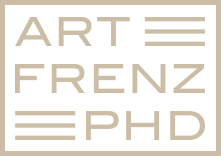 What does it mean to be in a relationship? My guess is that what comes to mind first is what we consider to be our ‘primary relationship’ with our ‘significant other.’ For many, this would refer to a spouse, boyfriend or girlfriend. For some, it could be a family member, best friend or beloved pet.
What does it mean to be in a relationship? My guess is that what comes to mind first is what we consider to be our ‘primary relationship’ with our ‘significant other.’ For many, this would refer to a spouse, boyfriend or girlfriend. For some, it could be a family member, best friend or beloved pet.
Relationships under the radar
But we are in relationship with so much more than these primary beings who play an obvious and prominent role in our lives. We have a relationship with people we don’t know well—acquaintances, colleagues we never met but only talk with on the phone once in a while, or even people we’ve never directly communicated with like famous musicians or politicians. We have relationships with intangible things like our work, hobbies, dreams and passions. We even have relationships with inanimate things like our cars, houses, bank accounts.
To be in a relationship with someone or something does not necessarily require any type of intimacy, physical contact, visual recognition, verbal exchange or even conscious awareness that the other person or thing exists. Perhaps all that is required for there to be a relationship is that two or more entities exist and that they have some impact on each other.
Let’s think about relationships that we have that we might not pay much attention to. In particular, let’s think about the relationship we have with our selves, or the different parts of our selves. How often do we think about our relationship with our feelings, our bodies, our minds, or our spiritual selves? What about our relationship with our problems, failures, shortcomings? Whether we’re conscious of it or not, we do interact with these parts of ourselves and these interactions affect our lives in profound ways.
Choose to see
If we try to define what makes a ‘good relationship,’ we might say first you have to recognize that the other (person, thing) is there. A good interpersonal relationship, for example, starts by seeing the other person as a separate and valuable being. And that relationship is further characterized by qualities like love, acceptance, understanding and support.
Now how would you characterize your relationship with your fear, anger, sadness or shame? Do you even know if they are there? Are these feelings that we avoid, deny, pretend don’t exist? Do we judge, minimize and shun them? Can we learn to accept, include and learn from them?
What is your relationship with your muscle tension like? Do you know how to recognize your muscle tension? What is your relationship with your lower back pain like? How do you relate to your panic attacks, insomnia or shyness? How do you relate to your weight and body image? Do you hate, despise, dread and fear these parts of yourself? If so, would that meet your definition of a ‘good relationship?’
Choose to respect
The good news is that we can choose how we treat or relate to other people, things and ourselves. Whether it’s our significant others or strangers driving other cars, physical possessions from our clothes to our homes, activities of work or play, or the many different layers and facets of our selves, we can start by recognizing that these entities exist and then deciding that they deserve to be treated with respect.
Art Frenz, Ph.D.
Image courtesy of Anitapeppers / Morguefile
